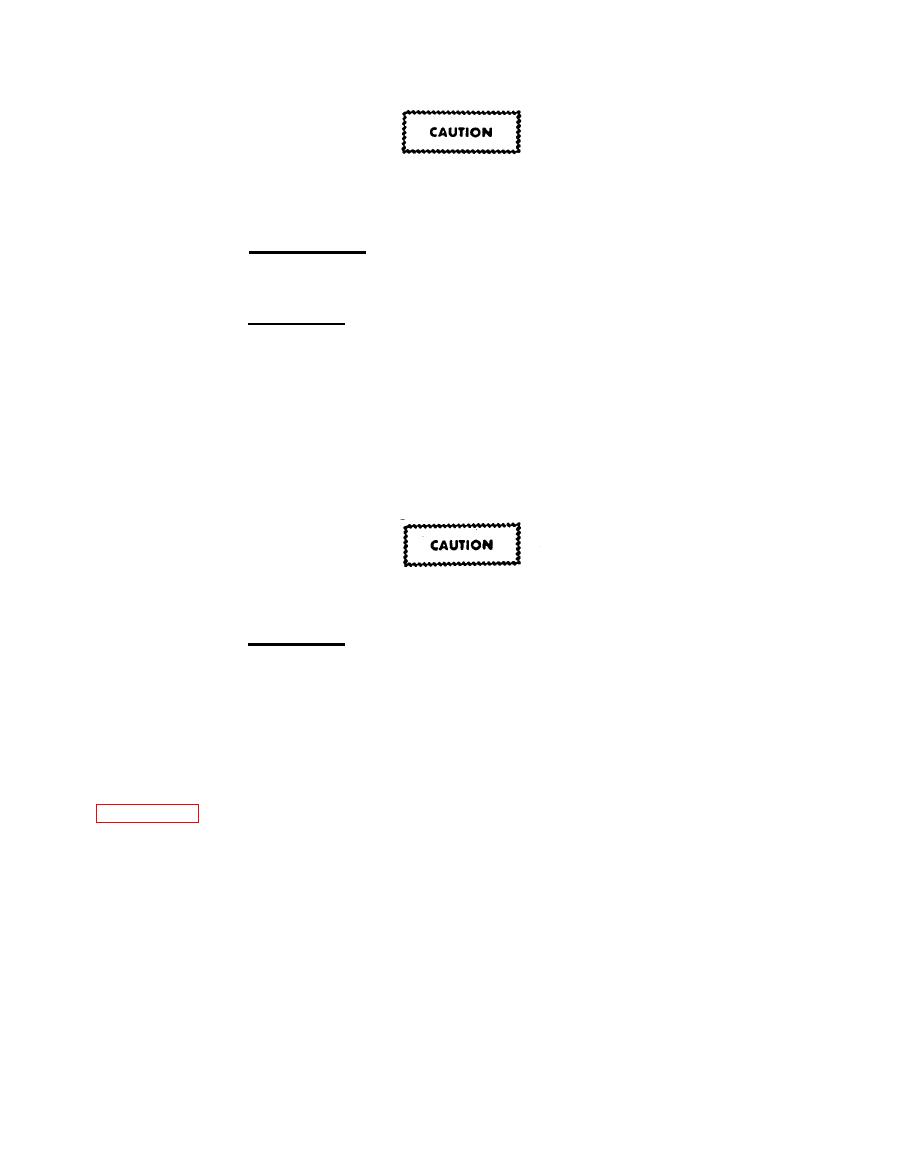 |
|||
|
|
|||
|
|
|||
| ||||||||||
|
|
 TM 5-6640-213-14
DO NOT at any time remove the rotor from the rotor
housing. Wash vanes, end plate and pump chamber
with solvent. Dry and relubricate lightly.
(4) Disassembly. If foreign matter has entered the pump,
try flushing. If this does not eliminate the foreign matter, remove
only the end plate and the four vanes.
(5) Alignment. If the air system fails to produce the
.
proper vacuum or pressure, the top clearance between the rotor and
body may have increased. A metallic clanging could mean the rotor
and body are touching. Remove the end plate only and set top clear-
ante between 0.0005 and 0.001 inch (0.013 mm to 0.037, mm). This can
.
be done by tapping lightly with a miniature hammer on the pump body,
either top or bottom, depending upon whether the clearance is too
great or too little. The rotor should be turned while setting
clearance so that all points on the circumference of the rotor will
clear. The end clearance, total for both sides of rotor, may vary
from 0.0015 to 0.002 inch (0.038 mm to 0.05 mm). This clearance is
maintained by means of paper gaskets on the motor side of the body.
Do not loosen bolts on either the body or rear end
plate (bracket).
(6) Operation.
(a) Plug in pump motor to the proper electrical out-
let, and connect the appropriate hose adapter to the intended load
(vacuum or pressure). The adapter fittings are clearly marked. For
pressure operation, hose clamps should be used.
(b) Turn on the pump, and adjust vacuum or pressure
to the. desired level by turning the stem of the regulator valve
located under the appropriate gage while watching the gage indication
.
(c) In vacuum operation, air flow through the pump
inlet is greatly reduced, also reducing lubrication by the oil mist
picked up from the oiler wick. Therefore the pump should be run
without load (no connected vacuum flask) at least 2 to 3 minutes for
every hour of vacuum operation. It is good practice to do this at
the end of each filtration, in filtering small or moderate volumes.
(d) If vacuum cannot be interrupted for these short
intervals, an accessory Siphon Oiler will provide lubrication for
continuous operation. Remove the vacuum regulator valve, and install
the Oiler in its place, filled to the marked level with SAE 10 oil.
The vent hole required for siphon action causes a slight reduction in
maximum vacuum. Refill the Oiler after every 20 to 50 hours of oper-
ation. The Oiler must be removed and the regulator valve replaced,
if the pump is later used as a pressure source.
3-15
|
|
Privacy Statement - Press Release - Copyright Information. - Contact Us |